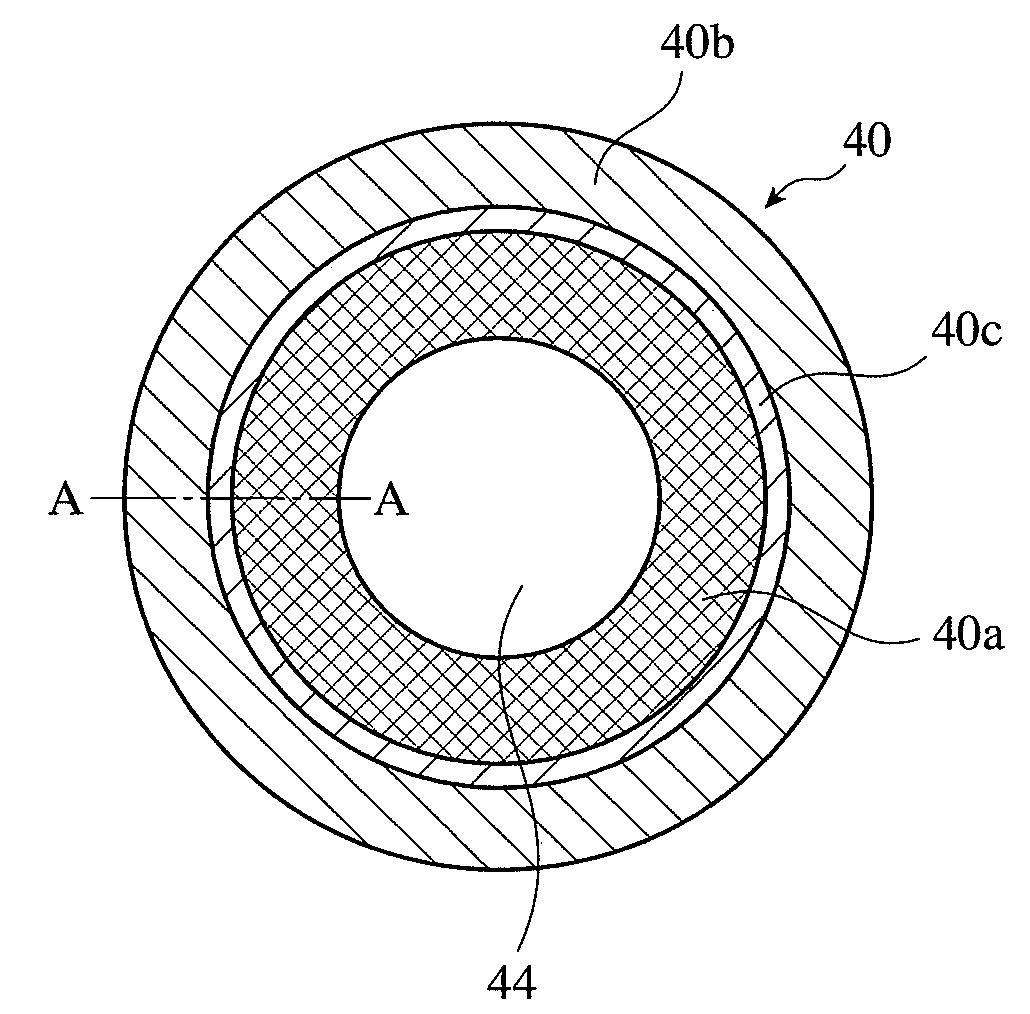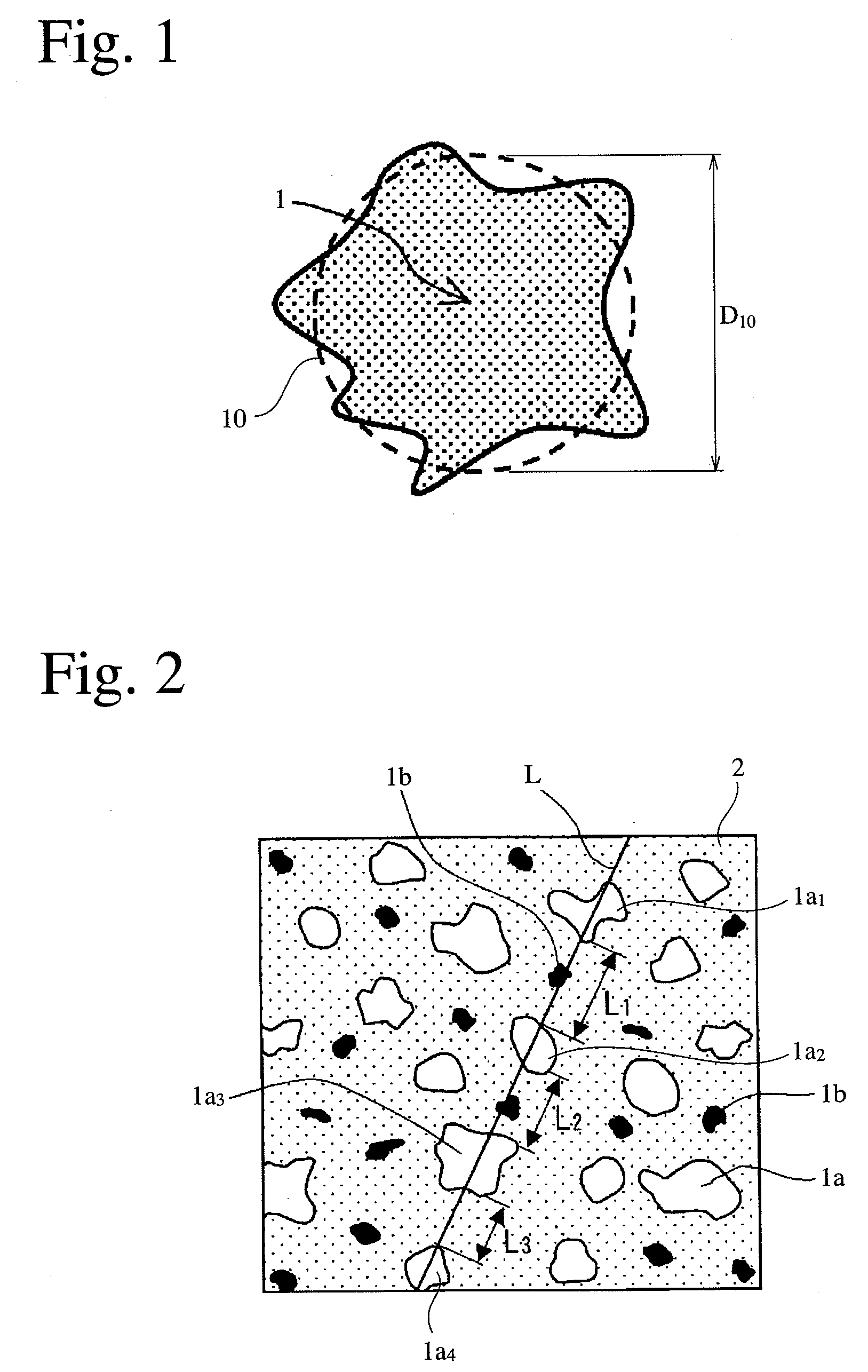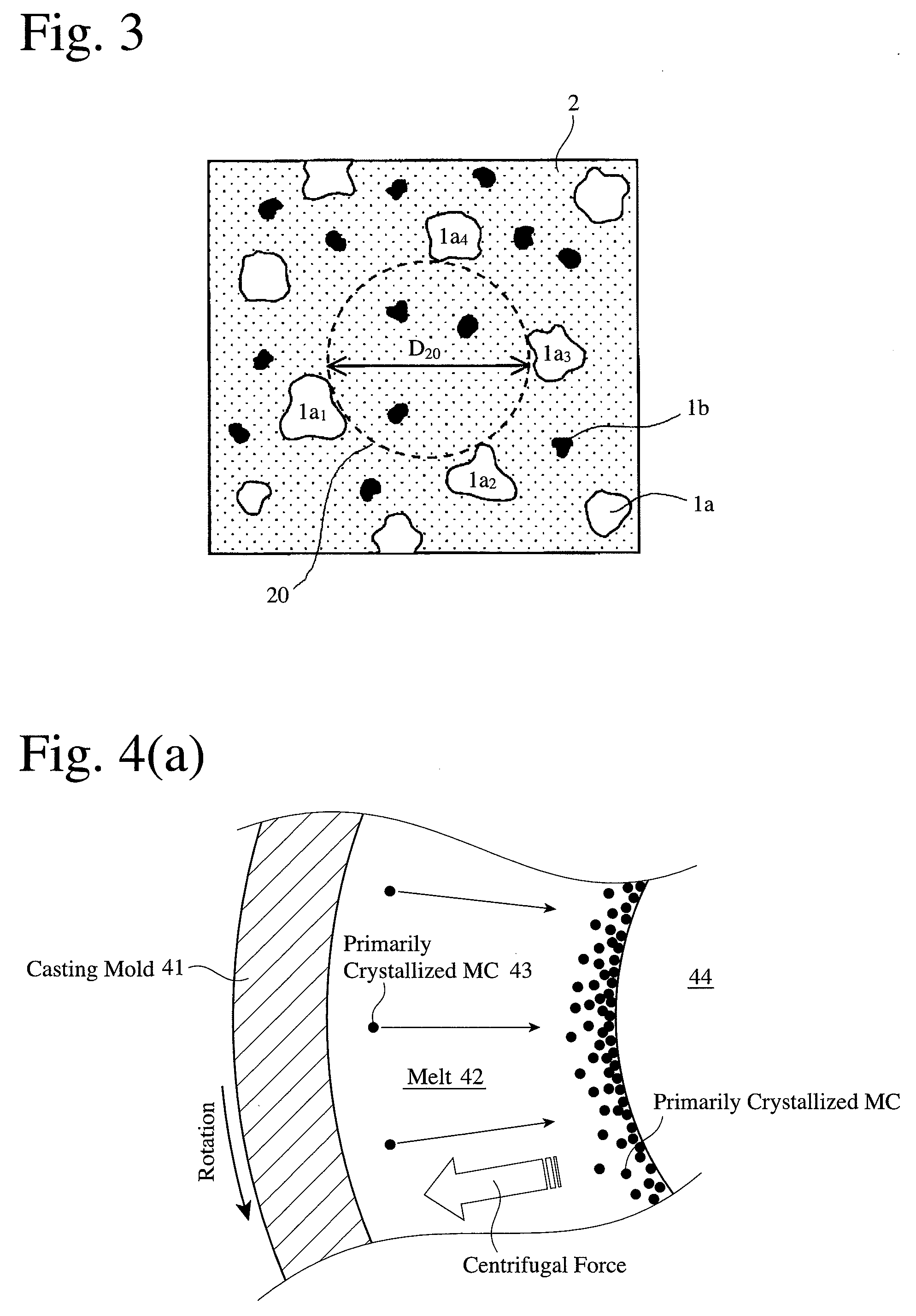Centrifugally cast composit roll
a technology of centrifugal casting and composite rolls, which is applied in the direction of manufacturing tools, transportation and packaging, and power-driven tools. it can solve the problems of deteriorating dimensional precision of rolled products, premature wear of surfaces, and deteriorating work appearance, and achieve excellent spalling resistance, surface roughening resistance and seizure resistance, excellent wear resistan
- Summary
- Abstract
- Description
- Claims
- Application Information
AI Technical Summary
Benefits of technology
Problems solved by technology
Method used
Image
Examples
reference examples 1-5
, COMPARATIVE EXAMPLES 1-3, AND CONVENTIONAL EXAMPLES 1 AND 2
[0158]Each outer layer melt having a chemical composition (% by mass) shown in Table 1 was centrifugally cast to produce a cylindrical body having an outer diameter of 450 mm, an inner diameter of 250 mm and a length of 800 mm. However, a stationarily casting method was used only in Comparative Example 1.
TABLE 1Composition of Melt for Outer Layer (% by mass)No.CSiMnVNbCrMoWNiCoTiAlReference4.40.90.717.3—4.65.319.3 ————Example 1Reference4.70.30.318.0—2.58.5——4.70.05—Example 2Reference2.80.20.97.7 1.7—2.33.2————Example 3Reference3.20.40.7—14.511.6 2.01.5————Example 4Reference2.60.70.511.6—8.8—12.0 1.5——0.11Example 5Comparative4.31.00.519.3—4.10.3—0.6———Example 1Comparative2.01.50.221.7——2.46.82.38.30.110.23Example 2Comparative5.10.40.69.4—15.9 2.4—————Example 3Conventional3.02.00.55.0—2.01.01.04.0———Example 1Conventional2.00.80.45.3—6.72.72.40.6———Example 2
[0159]A rod-shaped test piece was cut out of each cylindrical body of...
reference examples 6-10
, AND COMPARATIVE EXAMPLES 4-6
[0199]The chemical components (% by mass) of intermediate layer melts of Reference Examples and Comparative Examples are shown in Table 4.
TABLE 4Composition of Melt for Intermediate Layer (% by mass)No.CSiMnVNbCrMoWNiCoTiAlReference1.60.80.32.7—3.72.0—0.3———Example 6Reference2.00.20.23.6—0.94.9—————Example 7Reference0.40.21.30.1——1.10.3————Example 8Reference1.80.60.6—0.87.91.54.7————Example 9Reference1.00.30.4——5.41.2————0.04Example10Compar-0.21.50.2—————————ativeExample 4Compar-2.00.20.5——15.0 1.37.81.2———ativeExample 5Compar-2.30.80.31.3—4.18.4—0.1———ativeExample 6
example 1
[0200]After the outer layer melt of Reference Example 1 shown in Table 1 was centrifugally cast using a mold having an inner diameter of 450 mm and a length of 800 mm, the intermediate layer melt of Reference Example 6 shown in Table 4 was charged into the resultant outer layer. The resultant cylindrical body comprising an outer layer and an intermediate layer was taken out of the centrifugally casting mold, and a spheroidal graphite cast iron melt comprising by mass 3.3% of C, 1.8% of Si, 0.4% of Mn, 0.4% of Cr, 0.5% of Mo, and 2.2% of Ni, the balance being substantially Fe and inevitable impurities, was charged into the intermediate layer by a stationarily casting method, to form an inner layer, thereby obtaining a composite roll precursor. An MC-carbide-poor portion [an MC-carbide-poor outside layer 40b and a layer 40c having a gradually changing area ratio of MC carbide particles shown in FIGS. 4(b) and 4(c)] was removed from a body surface of this composite roll precursor by ma...
PUM
| Property | Measurement | Unit |
|---|---|---|
| equivalent-circle diameters | aaaaa | aaaaa |
| equivalent-circle diameters | aaaaa | aaaaa |
| equivalent-circle diameters | aaaaa | aaaaa |
Abstract
Description
Claims
Application Information
 Login to View More
Login to View More - R&D
- Intellectual Property
- Life Sciences
- Materials
- Tech Scout
- Unparalleled Data Quality
- Higher Quality Content
- 60% Fewer Hallucinations
Browse by: Latest US Patents, China's latest patents, Technical Efficacy Thesaurus, Application Domain, Technology Topic, Popular Technical Reports.
© 2025 PatSnap. All rights reserved.Legal|Privacy policy|Modern Slavery Act Transparency Statement|Sitemap|About US| Contact US: help@patsnap.com



